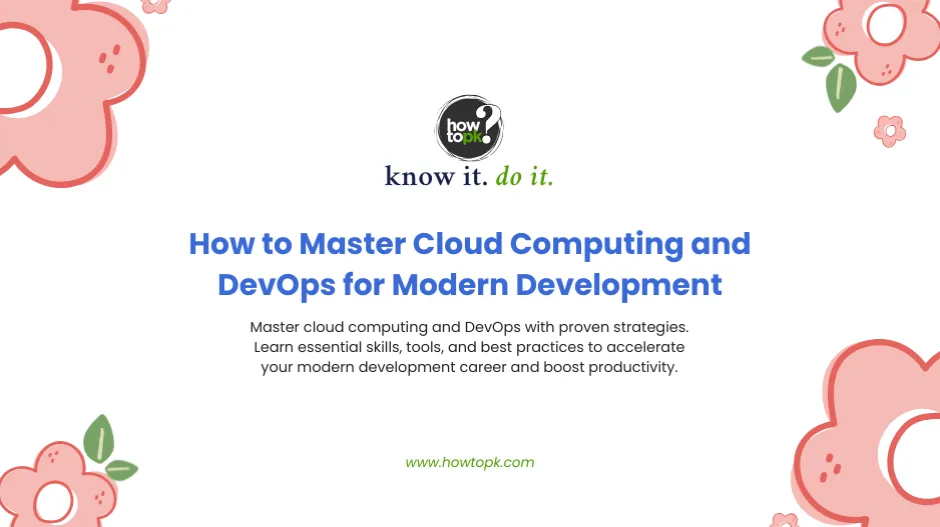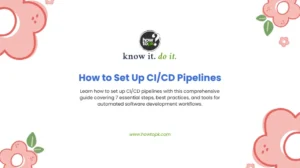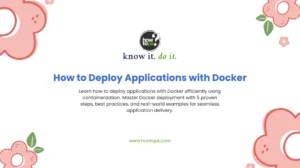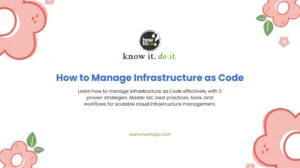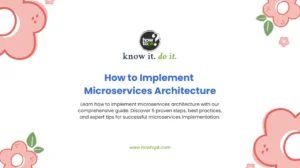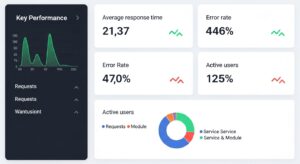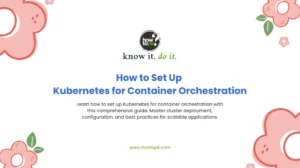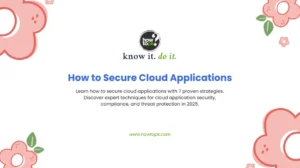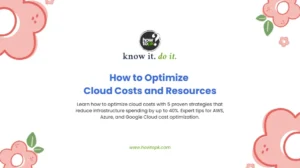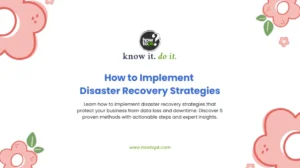Mastering cloud computing and DevOps has become the cornerstone of successful modern development careers. As organizations accelerate their digital transformation initiatives, the demand for professionals who can seamlessly integrate cloud technologies with DevOps practices continues to skyrocket.
But here’s what many developers overlook: simply knowing cloud platforms or DevOps tools isn’t enough. The real power lies in understanding how these technologies work together to create scalable, efficient development workflows.
Understanding the Foundation: What Makes Cloud Computing and DevOps Essential?
Before diving into advanced techniques, let’s establish why cloud computing and DevOps form the backbone of modern development. Cloud computing provides the scalable infrastructure that supports rapid application deployment, while DevOps bridges the gap between development and operations teams through automation and collaboration.
The synergy between these disciplines creates what industry leaders call “infrastructure as code” – a paradigm where your entire technology stack becomes programmable, version-controlled, and reproducible.
Key Benefits of Integrated Cloud Computing and DevOps:
- Accelerated Time-to-Market: Automated deployment pipelines reduce release cycles from weeks to hours
- Enhanced Scalability: Cloud-native applications automatically adjust to traffic demands
- Improved Reliability: Infrastructure monitoring and automated recovery minimize downtime
- Cost Optimization: Pay-per-use models and resource optimization reduce operational expenses
Step 1: Master Core Cloud Computing and DevOps Fundamentals
Your journey begins with understanding fundamental concepts that underpin both disciplines. Start by exploring how cloud service models (IaaS, PaaS, SaaS) align with DevOps automation strategies.
Essential Knowledge Areas:
Cloud Computing Concepts | DevOps Practices |
Virtual machines and containers | Continuous integration/deployment |
Auto-scaling and load balancing | Infrastructure as Code |
Storage solutions and databases | Configuration management |
Security and compliance | Monitoring and logging |
Focus on understanding how these elements interconnect rather than studying them in isolation. For comprehensive foundational knowledge, explore resources like AWS Documentation and The DevOps Handbook.
Step 2: Choose Your Cloud Computing and DevOps Technology Stack
Modern development requires strategic technology selection. The most successful professionals don’t try to master everything simultaneously – they build expertise progressively across complementary tools.
Recommended Learning Path:
- Cloud Platform: Start with one major provider (AWS, Azure, or Google Cloud)
- Containerization: Master Docker and Kubernetes fundamentals
- CI/CD Tools: Learn Jenkins, GitLab CI, or GitHub Actions
- Infrastructure as Code: Practice with Terraform or CloudFormation
- Monitoring: Implement solutions like Prometheus, Grafana, or DataDog
Consider your career goals and industry demands when selecting your initial focus area. Enterprise environments often favor different tools than startups or cloud-native companies.
Step 3: Develop Hands-On Cloud Computing and DevOps Skills
Theory without practice creates false confidence. The most effective approach involves building real projects that demonstrate your understanding of integrated cloud computing and DevOps workflows.
Practical Project Ideas:
Beginner Level:
- Deploy a web application using containerization and cloud hosting
- Create automated testing pipelines with basic deployment scripts
- Implement basic monitoring and alerting for application health
Intermediate Level:
- Build multi-environment deployment pipelines (dev, staging, production)
- Configure auto-scaling infrastructure with load balancing
- Implement database backup and disaster recovery procedures
Advanced Level:
- Design microservices architecture with service mesh integration
- Create comprehensive security scanning and compliance automation
- Build cross-cloud deployment strategies with failover capabilities
Document your projects and share them through platforms like GitHub to demonstrate practical expertise to potential employers.
Step 4: Implement Cloud Computing and DevOps Security Best Practices
Security integration separates competent practitioners from true experts. Modern development demands security considerations throughout the entire development lifecycle, not as an afterthought.
Critical Security Areas:
- Identity and Access Management: Implement least-privilege access controls
- Secret Management: Use dedicated services like AWS Secrets Manager or HashiCorp Vault
- Network Security: Configure proper VPC settings, security groups, and network segmentation
- Code Security: Integrate static analysis and vulnerability scanning into CI/CD pipelines
- Compliance: Understand industry requirements (SOC 2, HIPAA, GDPR) and automation strategies
Resources like OWASP DevSecOps Guidelines provide comprehensive frameworks for security integration.
Step 5: Master Advanced Cloud Computing and DevOps Automation
Automation excellence distinguishes senior practitioners from beginners. Focus on creating repeatable, reliable processes that eliminate manual intervention and reduce human error.
Advanced Automation Techniques:
Infrastructure Automation:
- Implement blue-green deployments for zero-downtime releases
- Create self-healing infrastructure with automatic failure recovery
- Build dynamic scaling based on custom metrics and business logic
Process Automation:
- Develop ChatOps integration for deployment approvals and monitoring
- Create automated rollback mechanisms triggered by performance thresholds
- Implement automated security patching and compliance reporting
Monitoring and Observability:
- Build comprehensive logging strategies with centralized analysis
- Create predictive alerting based on trend analysis
- Implement distributed tracing for microservices debugging
Step 6: Build Cloud Computing and DevOps Team Collaboration Skills
Technical expertise alone doesn’t guarantee success. The most valuable professionals excel at facilitating collaboration between traditionally siloed teams.
Essential Collaboration Areas:
- Cross-functional Communication: Learn to translate technical concepts for business stakeholders
- Incident Management: Develop structured approaches to problem resolution and post-mortem analysis
- Knowledge Sharing: Create documentation and training programs that scale organizational capability
- Change Management: Build consensus around new tools and processes while minimizing disruption
Consider pursuing certifications that validate both technical skills and collaborative competencies.
Step 7: Stay Current with Cloud Computing and DevOps Trends
The technology landscape evolves rapidly. Successful practitioners develop systematic approaches to continuous learning and skill development.
Recommended Learning Strategies:
- Community Engagement: Participate in local meetups, conferences, and online forums
- Hands-on Experimentation: Regularly test new tools and services in sandbox environments
- Industry Publications: Follow thought leaders and subscribe to relevant newsletters
- Professional Certification: Pursue vendor-specific and vendor-neutral certifications
Platforms like KubeCon and AWS re:Invent provide insights into emerging trends and networking opportunities.
Common Pitfalls to Avoid in Your Cloud Computing and DevOps Journey
Learning from others’ mistakes accelerates your progress. Here are the most common challenges that derail otherwise capable practitioners:
Technical Pitfalls:
- Over-engineering solutions for simple problems
- Neglecting disaster recovery and backup strategies
- Focusing on tools rather than solving business problems
- Ignoring cost optimization until budgets become constrained
Professional Pitfalls:
- Attempting to master too many technologies simultaneously
- Underestimating the importance of soft skills and collaboration
- Failing to document processes and decisions for future reference
- Avoiding challenging projects that stretch current capabilities
Measuring Your Cloud Computing and DevOps Mastery Progress
Establish concrete metrics to evaluate your skill development and career advancement:
Technical Metrics:
- Deployment frequency and lead time improvements
- System uptime and mean time to recovery
- Infrastructure cost optimization achievements
- Security vulnerability reduction rates
Professional Metrics:
- Certification completions and renewal maintenance
- Conference presentations or blog post publications
- Mentorship relationships and knowledge transfer activities
- Cross-functional project leadership opportunities
Your Next Steps in Cloud Computing and DevOps Mastery
Mastering cloud computing and DevOps requires sustained effort and strategic focus. Start by selecting one cloud platform and one DevOps toolchain for deep exploration. Build practical projects that demonstrate integrated skills, then gradually expand your expertise across complementary technologies.
The intersection of cloud computing and DevOps represents one of the most dynamic and rewarding areas in modern technology. By following these structured approaches and maintaining consistent learning habits, you’ll develop the expertise that organizations desperately need.
Ready to accelerate your journey? Start with one practical project this week. Choose a simple application, containerize it, deploy it to a cloud platform, and implement basic monitoring. This hands-on experience will provide the foundation for everything that follows.

